Nest Box Report for 2018
by Tim Burris, Mariton Preserve Manager
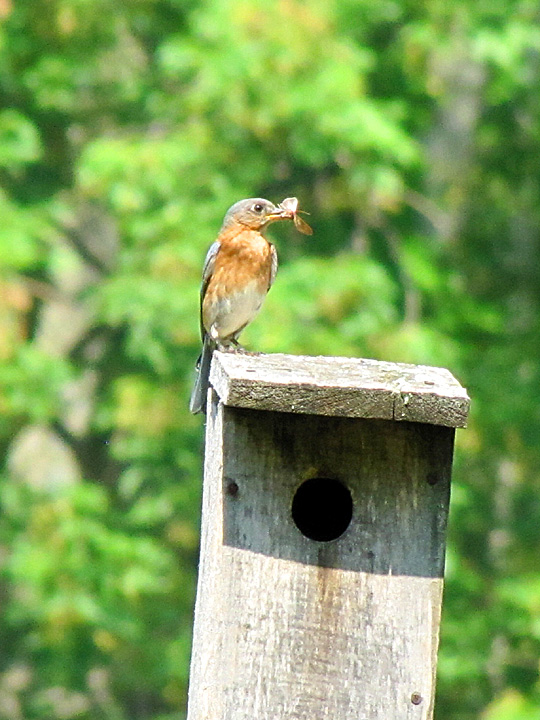
Carole Mebus took this photo of a female Bluebird about to feed her babies.
Nest boxes were well used at our Natural Lands preserves in 2018. I received reports from 14 preserves after the nesting season. We had 436 nest boxes monitored by volunteers and staff. This is a lot of boxes to monitor and maintain. Fortunately, volunteers are usually only responsible for about two dozen each, which is very manageable.
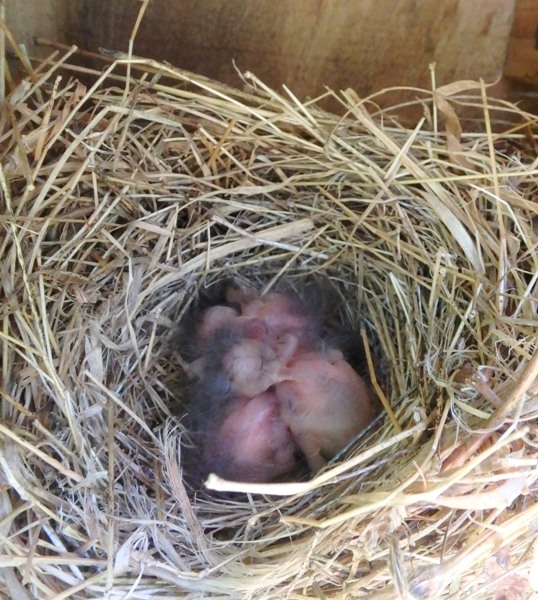
It is so exciting to open your nest box and find newly hatched babies.
I often remind monitors that the nesting season can start early. The earliest nesting was March 29 when Preserve Manager, Lee Shull, recorded Eastern Bluebirds building a nest in one of his 51 boxes. Lee has done a terrific job with bluebirds and consistently gets over 100 fledglings every year. This year was less than ideal with a cold April, but Lee still had 126 bluebird babies fledge out of his boxes. Lee also recorded the most Tree Swallows of any preserve with 132 fledglings leaving his nest boxes.
ChesLen was another preserve that passed the century mark with 101 fledglings (that is Bluebirds, not Dalmatians). (Thanks to the five monitoring teams at ChesLen.) Altogether at the 14 preserves, we had 118 Eastern Bluebird nests in boxes, resulting in 420 fledglings. That is a lot of beautiful singing.
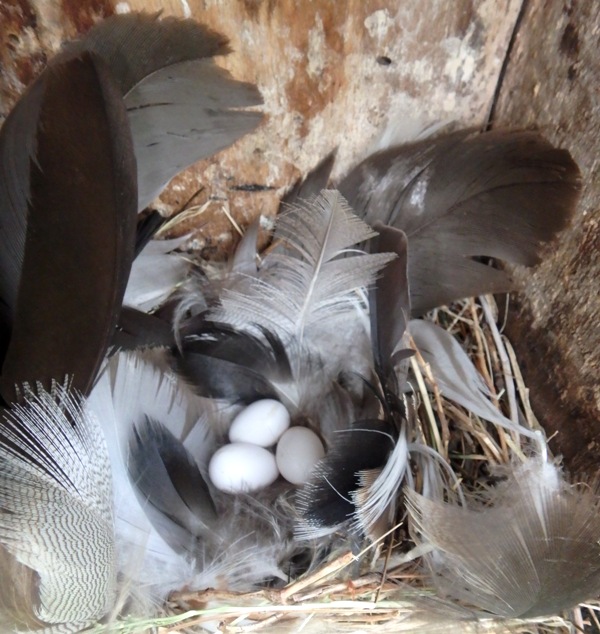
A clutch of Tree Swallow eggs.
While we love Eastern Bluebirds, many preserves have habitat that is equally suited for Tree Swallows. In 2018, we had 575 fledglings leave 127 Tree Swallow nests. That is a lot of bug control over the meadows and wetlands! And everyone I know loves to watch swallow aerobatics.
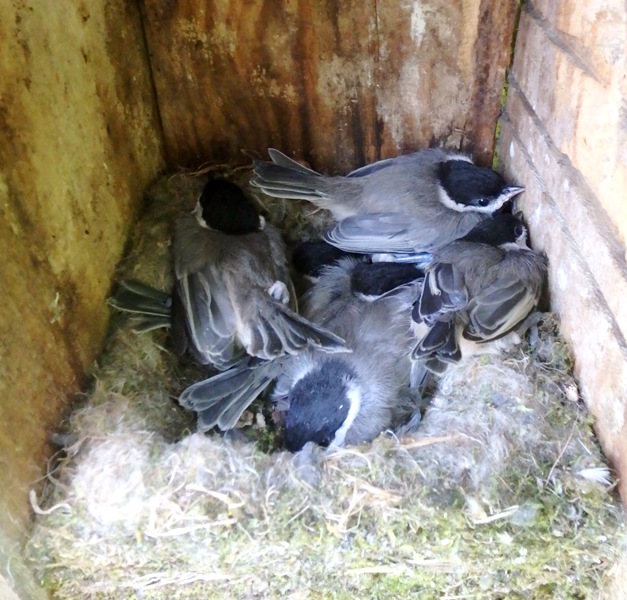
Chickadee fledglings getting ready to leave their nest box.
Chickadee nesting has increased in recent years and 44 fledglings were recorded leaving Natural Lands’ nest boxes.
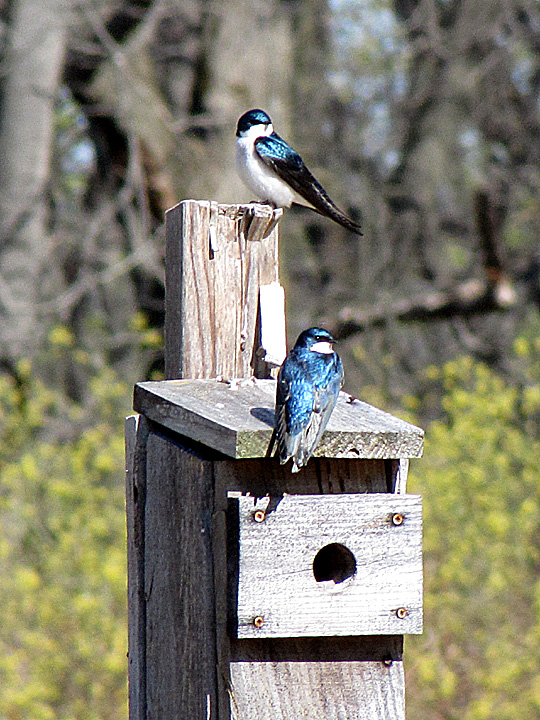
Thank you from both the birds and the bird watchers. Photo by Carole Mebus.
A big Thank You goes out to all of the monitors that send me their reports. Having monitored nest boxes for over 30 years, I personally know that the weekly monitoring is only part of the process. At the end of the season you have to sift through the records and compile numbers in an abridged report. Then you can spend the winter thinking about tweaking locations and replacing boxes. I usually start cleaning out my nest boxes in February or early March, and the fun begins again.
